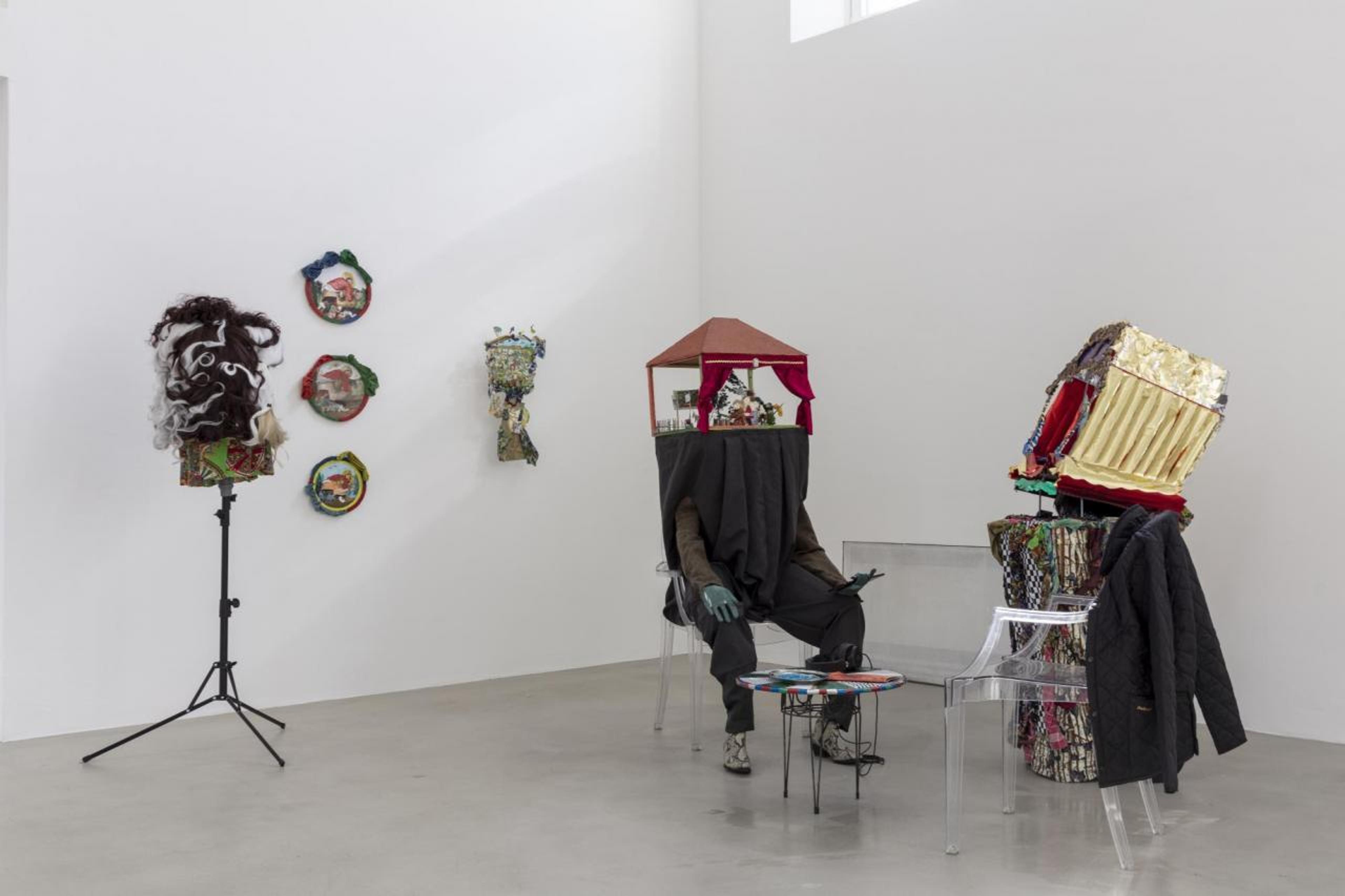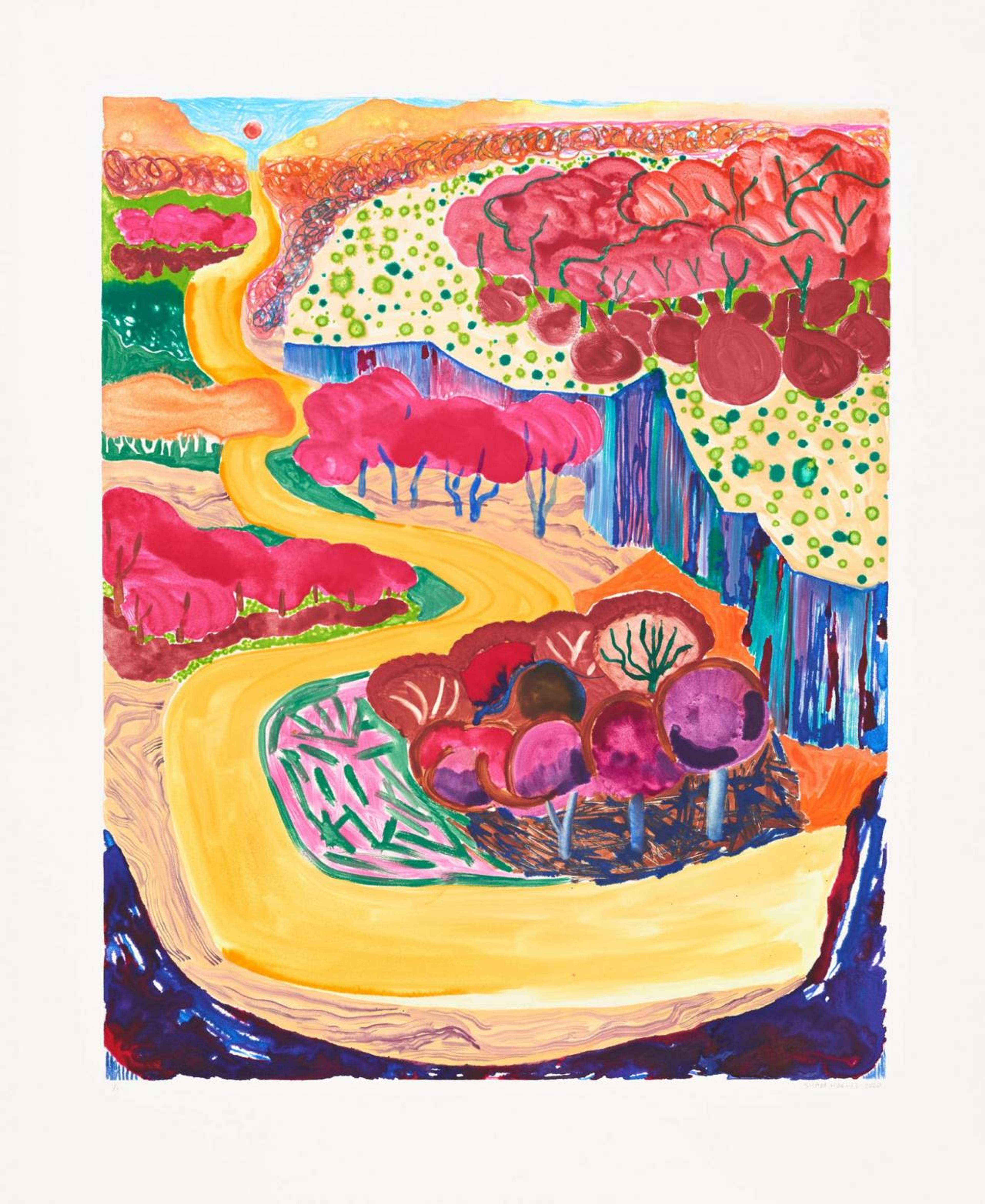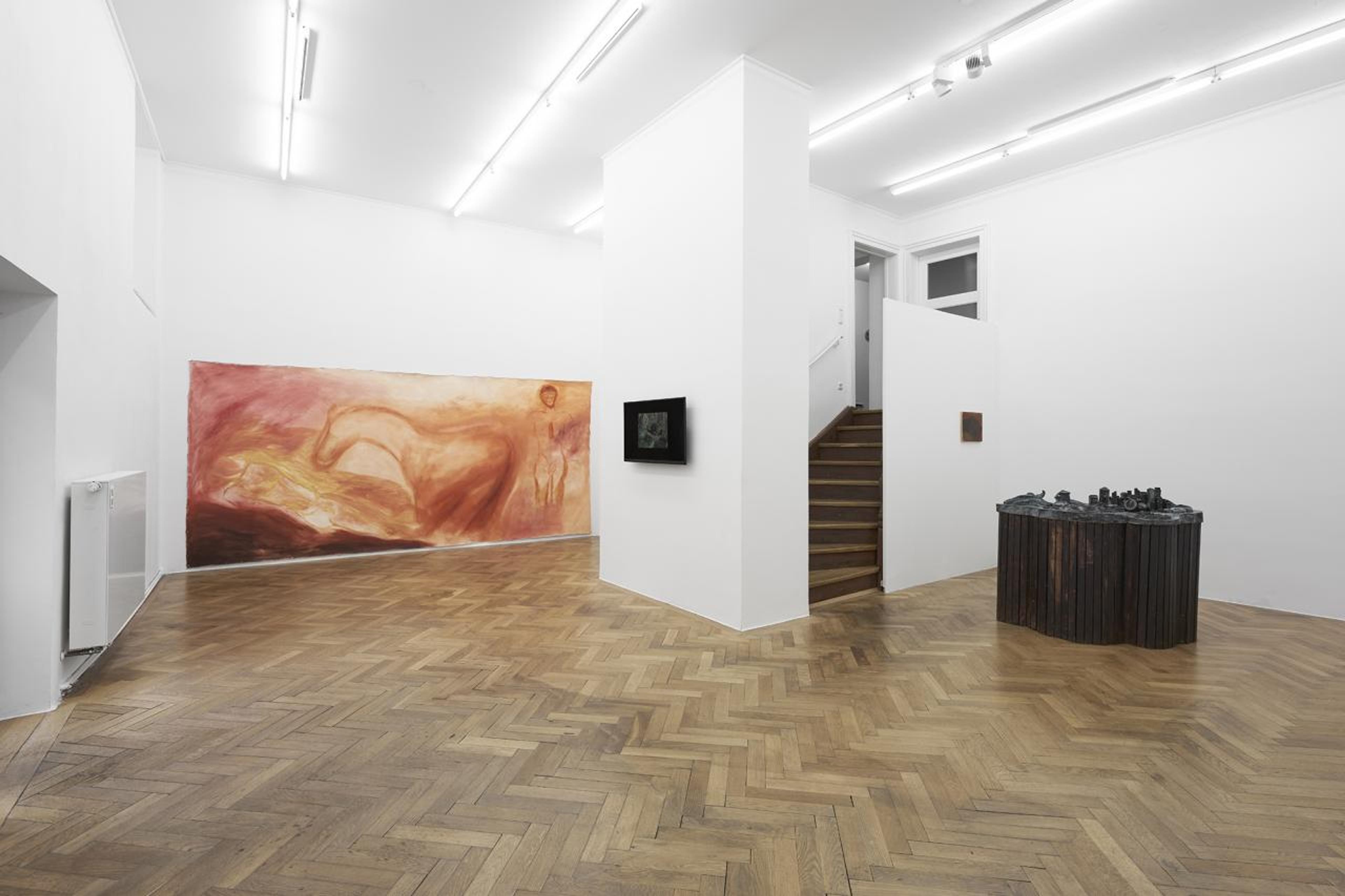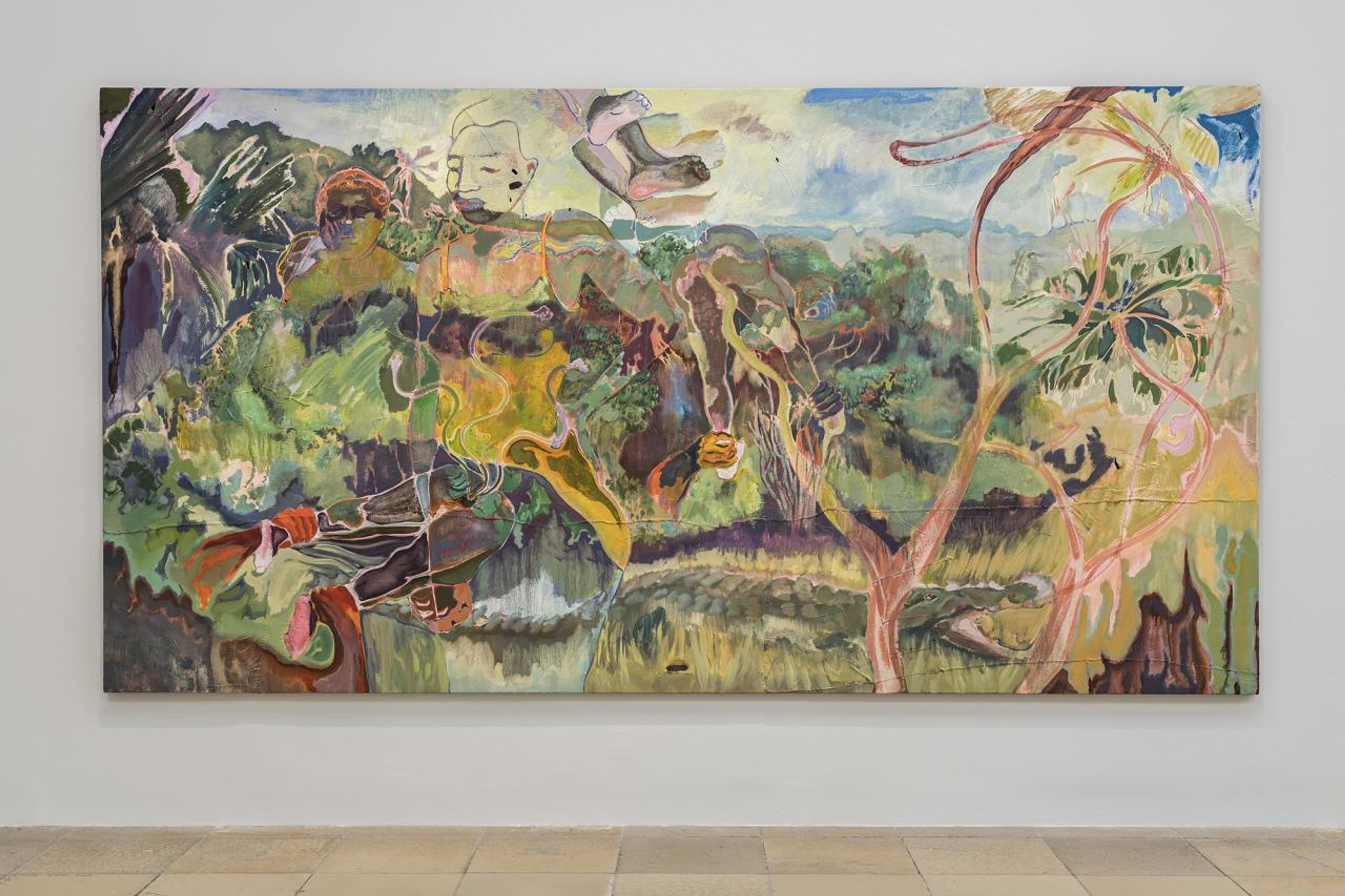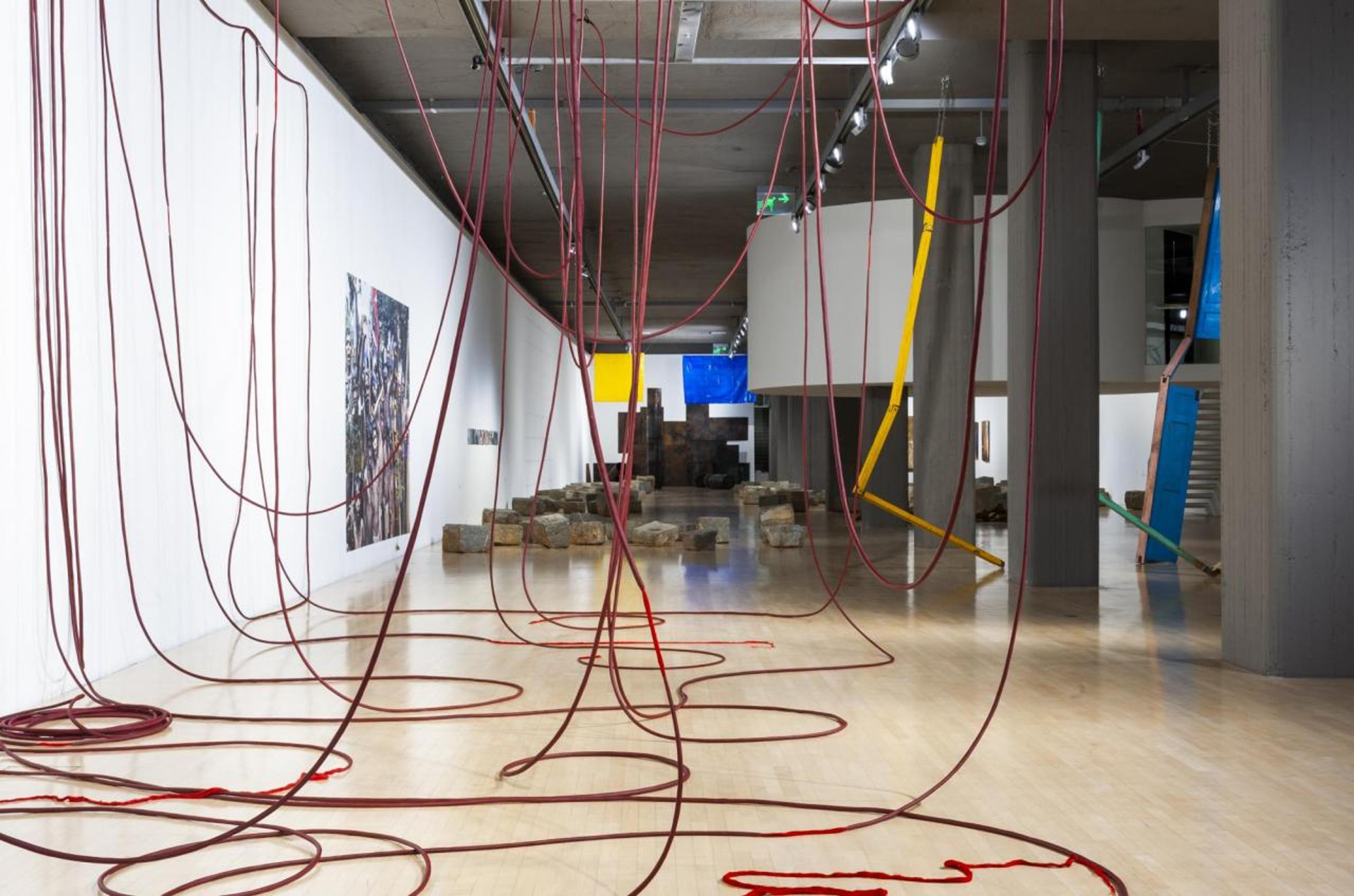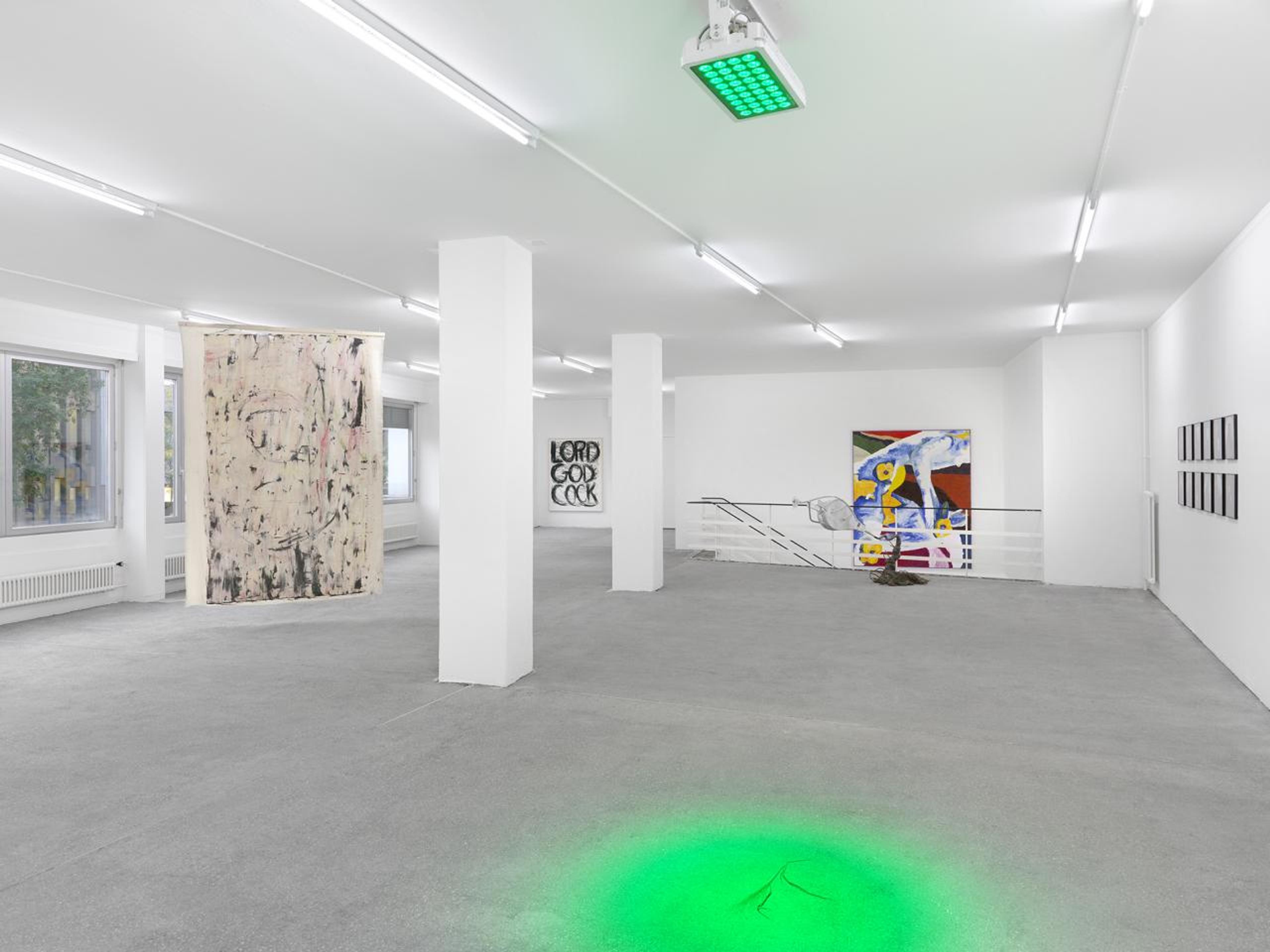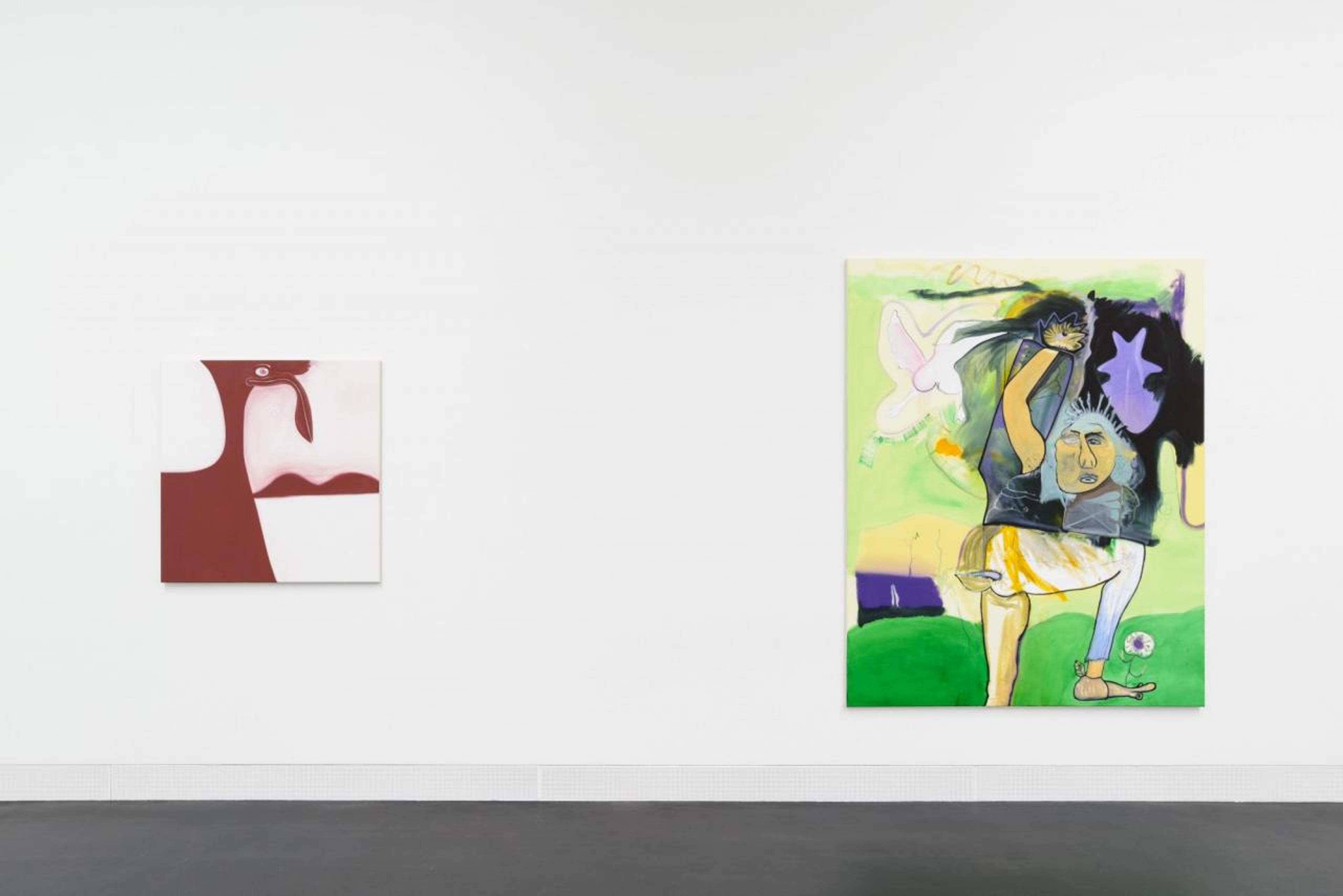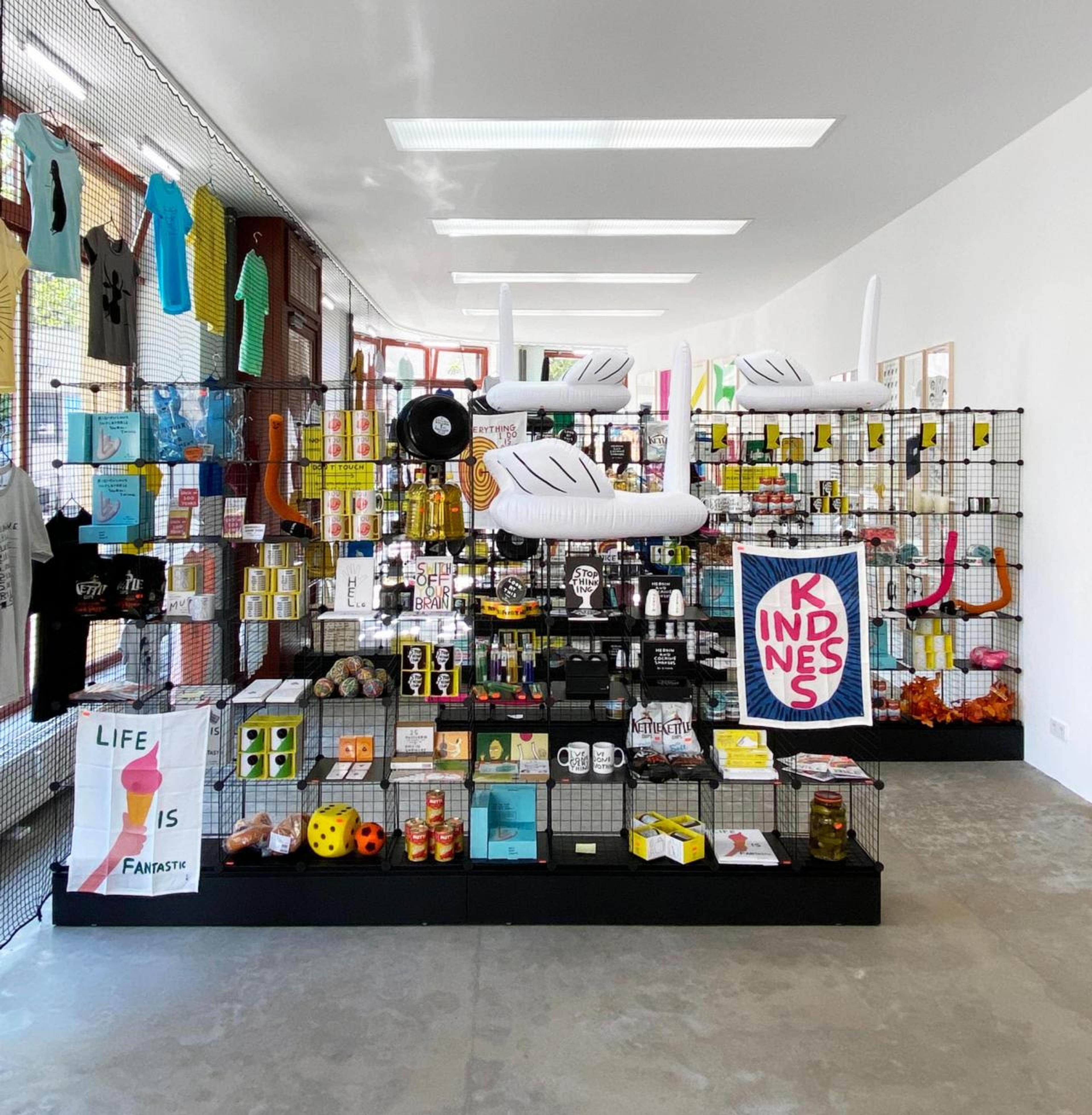Seasons change, but do things stay the same? Under the guise of a return to some semblance of normalcy, I hit the road for Munich to take in the city-wide Various Others programme – a collaborative endeavour between galleries, institutions, and event spaces in the Bavarian Capital – with Berlin still heavy on my mind. For in the city which I call home, they were getting ready to open Berlin Art Week and Gallery Weekend, along with the most recent iteration of the Berlin Biennale (curated by María Berríos, Renata Cervetto, Lisette Lagnado, and Agustín Pérez Rubio), which had an importance, a gravity, a potential response to a burning need for the art world machine to dust itself off after months where it seemed things were either on permanent pause, or simply slowed to such a crawl that barely any movement whatsoever could be perceived.
Berlin and Munich were not alone, as Zurich Art Weekend got underway at the same time, while Vienna marched out its curated_by, featuring curators who put up shows in commercial galleries across the city, along with the Wiener Festwochen. The results were a mixed bag (and I don’t just mean the art on view, but the people, too), caught in some kind of spiderweb of cautious enthusiasm, like entering a party where you don’t know anyone and your first move is in the direction of the beer and wine and table.
Félix González-Torres, Untitled , 1992, Offset print on paper/billboard, installation at Odeonsplatz/connecting corridor U 6/5; Courtesy of The Félix González-Torres Foundation; Photo: Thomas Dashuber
One thing was very clear across the three cities: flat is back. Drawings, paintings, and works on paper, were everywhere to be seen, carrying a trace of lockdown, a forced intimacy, a closeness that was at times uncomfortable but also predictable. What could be said of the usual circulation of art that arrived without its artists? Parties and openings where the ratio of curators and press folks to visitors fell heavily in favour of the former? Flat things travel well, I guess, and aside from the constraints of making things without the usual amenities of assistants and large spaces, none of the artists had to be there to oversee the installation of their work. This sounds like a dig, but it’s not. It was like an exercise in a community drawing class, where everyone had to create under very specific instruction or restraint: drawing on the right-side of your brain, while the left was busy with anxiety or boredom.
IInstallation view, Laura Ziegler and Stephan Janitzky in “Not Working – Artistic production and matters of class”, Kunstverein München, 2020. Courtesy Kunstverein München e.V.; Photo: Sebastian Kissel
How smart it was, then, of the organisers of Various Others to centre the activities around the Kunstverein Munich, whose group show (“ Not Working ”, up until 22 November) is dedicated to the question of labour. If there were ever a time to thematise work, it was now, where layoffs and budget crises were putting enormous pressure on the employees who are the backbone of exhibitions and art making. Munich was still reeling from the decision to cancel Oktoberfest this year and next, whose economic impact on the city is hard to overestimate. Over lunch on my second day in beer town, I learned that many drink servers make their entire student tuition over the course of the event. Conversations drifted into these areas all too easily, and the desire to keep the art train a runnin’ was like trying to look away from a traffic accident. This, it is now painfully obvious to many, is not something that will return to the salad days of expensive dinners, bonuses, commissions, multiple freelance projects, or the certainty of a future horizon of possibility. Still, the weather was a boon, and the verdant capital of hops was teeming with art-hungry visitors, but it all came at once. In press conferences, I could barely hear what people were saying, muffled by masks and the trepidation of someone dipping their toe into a swimming pool to test the temperature of the water.
The Sammlung Goetz installed editions of Félix González-Torres’ ethereal black-and-white photographs in subway stations throughout the city. The haunting presence of ghostly figures sat between posters for coming attractions and KFC, and just like the economy of images in which González-Torres’ works circulate, almost no one in the hurried tunnels of the underground paused to take a closer look. Some works continue to be contemporary, they just need the right context to activate their codes and meanings. Is that a tribute to an artist’s relevance, or an ominous sign that the world they once reflected still exists?
Shara Hughes, No One Way , 2020, Watercolor Monotype, Image: 100,6 x 80,6, Paper: 123,2 x 101 cm, Courtesy: Knust Kunz Gallery Editions
Installation view, Lena Henke, Dominique Knowles, and Megan Francis Sullivan; Sperling Gallery Munich in collaboration with Galerie Emanuel Layr (Vienna/Rome), 2020
Out of the subway and into Knust Kunz Gallery to take in a series of gloriously printed monotypes by Sharah Hughes (“ Relentless ”, up until 10 October), executed by Pace Prints in New York that looked like dreamy futuristic fauvism. The idea behind Various Others was to invite galleries from outside Munich to exhibit within the walls of a local space, which had a special relevance on the brink of new restrictive measures, offering visitors the opportunity to see Lena Henke from Emanuel Layr ’s programme in a co-organised group show with Sperling , also featuring Dominique Knowles and Megan Francis Sullivan.
Michael Armitage, The Paradise Edict , 2019, Haus der Kunst, 2020; Photo: Markus Tretter
Installation view, Sheela Gowda, “It.. Matters”; Lenbachhaus, Munich, 2020
With the imposing Haus der Kunst under renovation, newly-minted director Andrea Lissoni led a tour around the Michael Armitage show (“ Paradise Edict ”, up until 14 February, 2021), where flat figuration and vibrant tones were layered on top of Lubungo, a Ugandan bark cloth: a shrewd combination of Old Master underpainting with a local, materially-specific support. Lenbachhaus appealed to other senses – hearing and smell – with the still ongoing “Radio Activity” exhibition, and Sheela Gowda’s first major show in Germany (“ It…Matters ”), which showcased the artist’s trademark colour-rich installations with fragrant materials and textiles.
Dinners and parties were on the docket in Munich, but without the usual rush of guest lists and VIPs. At the Kunstverein, everyone was invited to join in the fun with a bar installed at the entrance, and the luring English garden adjacent. It made sense to pair a democratic partying vibe with a show about labour, and for a brief moment, the bucolic splendour of the outdoors made the imposing architecture of the city appear like a stage – unoccupied but beleaguered by the weight of its imperial presence. A friend and I swapped Jewish and Mennonite jokes (I didn’t know such a thing existed), and after a long night, it was off to Zurich, where an editor colleague and I almost missed our bus, and a puff of exasperation followed from the driver who harrumphed after seeing that neither of us was carrying a German passport.
Installation view, “Elisabeth Wild featuring Raúl Itamar Lima and Sophie Thun”, Karma International, Zurich, 2020; Photo: Annik Wetter
Installation view, “Wesestrasse 70”, Karma International, Zurich, 2020; Photo: Annik Wetter
Installation view, “Smoke and Mirrors. The Roaring Twenties", Kunsthaus Zürich, 2020; Photo © Franca Candrian
Zurich’s Art Weekend (ZAW) culminated around a central complex that conveniently contains multiple galleries and institutions, in the Löwenbräukunst, which played host to the opening reception and Zoomed-in celebratory toast. Before arriving, I made a sideward jaunt to Karma International, whose two spaces featured the work of mostly female artists both living and passed – from the last century to the current one – an excellent complement to the Kunsthaus Zürich’s centennially-oriented show on the 1920s and 2020s, “ Smoke and Mirrors: The Roaring Twenties ” (up until 11 October). Karma’s two shows, located across the street from one another, were dedicated to the work of Viennese-born Elisabeth Wild , who died earlier this year in Guatemala, where her daughter, the painter Vivian Suter, lives and works. Curated by Adam Szymczyk, with a few pieces by Raúl Itamar and Sophie Thun, Wild’s small, intimate collages of mostly monochromatic elements delicately arranged together were a powerful contrast to her daughter’s large, gestural painting hanging across the way , where colour bleeds into stained patches on unstretched canvas. The two were featured in a film on display as part of the Wild exhibition, Vivian’s Garden (dir. Rosalind Nashashibi, 2017), where we see mother and daughter at work in the Guatemalan rainforest, embedded and resolute, working separately in the nature around them.
Installation view, “Arrows”, Francesca Pia, Zurich, 2020
Installation view, “Vittorio Brodmann”, Galerie Gregor Staiger, Zurich, 2020
At the Löwenkunstbräu, a group show at Francesca Pia underscored the full range of media (not all of them flat!), and a wonderful exhibition by Swiss artist Vittorio Brodmann , which kept the flat theme going – vibrant and sensual – just what my eyes had been missing in the last months. There was an ease, convenience even, to the careful looking that the pieces in these galleries engendered, ever a reminder that how works interact with a room is crucial to their effects.
After the whirlwind tour of Munich and Zurich, where I’m sure I missed more than I took in, I arrived in Berlin for the last day of Gallery Weekend, where those I did manage to see were exhausted, most confessing that they were glad to be finished with the weekend. I was tired, too, but the promise of a decidedly different start to the season still felt odd, premature, which nevertheless made the disparities between the works on view and the trappings of the art world around them feel more productive than it had been. While one can never forget the commercial interests behind these events, there were moments that slipped through the cracks, where time was afforded, and not so many people to get in the way. My lazy Sunday stroll felt quiet, calm even, though still tinged with uncertainty. My lazy Sunday stroll felt quiet, calm even, because the staged choreography of dinners, speeches, talks, and prattling about, for a brief moment, receded into the artifice that it always was, and probably will continue to be.
Sanya Kantarovsky, Dick Bed , 2020, Watercolor and ink on Arches paper, 28.6 x 37.5 cm
Installation view, David Shrigley, “Very open, very closed”, BQ Berlin, 2020
Two-dimensionality was also on the menu in Berlin, from Seth Price’s drawings and skin archive, with a little nod to sculpture in the middle at Bortolozzi to Sanya Kantrovsky’s fiendish comic figures arranged in a small space at Capitain Petzel . Intimacy found a new home in the paintings of Ambera Wellmann at Kraupa-Tuskany Zeidler, where pudgy putti were arranged inside of checkerboard painted walls. At Tanya Leighton, Brian Belott showcased what could only be described as the guts of a Toys “R” Us on LSD – bright, cotton stuffed paintings complete with fans, where fabrics wafted like toilet paper on rolls. At Sweetwater , LA-based artist D’Ette Nogle’s mostly colourless works hunted the three-dimensionality of childhood dresses into photographs, an archive of a body that no longer is, or was. Philippe Pareno’s “ Manifestations ” at Esther Schipper took the larger environment of the gallery as a site for the proliferation of viewpoints – from the ceiling to the floor – where the reduced sociality of the art world was made over into an environment where visitors were on centre stage, being watched, a little eerie and uncomfortable. Sound familiar?
Some were busy aestheticizing their loneliness – schlock from the quarantine, or whatever – creating without pause under threat of infection, but it was heartening to see this earnestness upended, that darkly ironic takes are still possible, like David Shrigley’s tourist shop for the art world at BQ , complete with coffee mugs, t-shirts, postcards: funny and desperately timely. “Welcome to the art world again, tourists!”. Shrigley’s neon sign announced what we all knew to be true: “Very Open Very Closed”. The dangers that one takes themselves too seriously has hung like a giant coat over the art world, heavier than the weight of history in Germany’s capital. The mind, it seems, is still a very terrible thing to waste.
Colin Lang
For more works, have a look out our Image Gallery for Berlin Gallery Weekend




